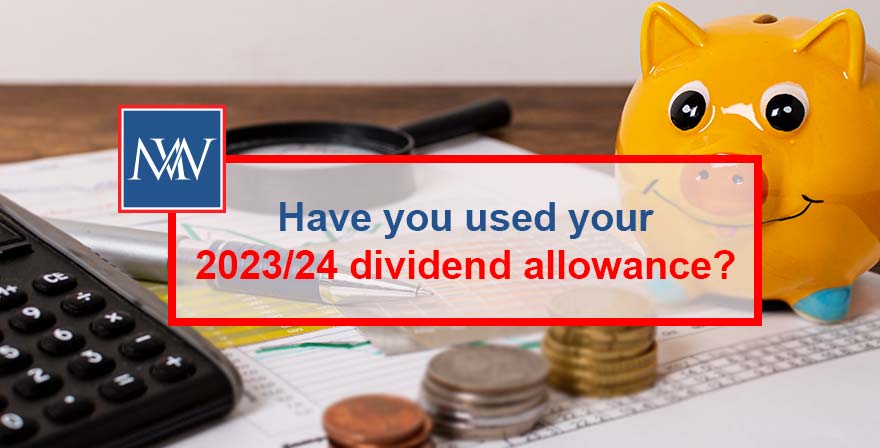
Have you used your 2023/24 dividend allowance?
As we move into the final months of the 2023/24 tax year, it is time to give some thought to whether you have used your 2023/24 dividend allowance yet, and whether it is worth extracting further profits as dividends before the end of the tax year. Once a salary has been taken equal to the personal allowance of £12,570, it is tax efficient to extract further profits as dividends.
Nature of the dividend allowance
The dividend allowance is available to all taxpayers, regardless of the rate at which they pay tax. The allowance is set at £1,000 for 2023/24, but will fall to £500 for 2024/25. Dividends sheltered by the allowance can be enjoyed free of tax by the recipient; however, as the allowance uses up part of the tax band in which the dividends fall, it is more of a zero-rate band than a true allowance.
Dividends are taxed as the top slice of income and the dividend tax rates are less than the general income tax rates. Where dividends fall in the basic rate band, they are taxed at the dividend ordinary rate of 8.75%; where they fall in the higher rate band, they are taxed at the dividend upper rate of 33.75%; and where they fall in the additional rate band, they are taxed at the additional dividend rate of 39.35%. By comparison, the basic rate of income tax is 20%, the higher rate of tax is 40% and the additional rate is 45%.
Restrictions on paying dividends
Dividends are paid from post-tax profits which have already suffered corporation tax. A dividend can only be paid where a company has sufficient retained profits from which to pay the dividend.
Further, dividends must be paid in proportion to shareholdings, although this restriction can be overcome by having an alphabet share structure which allows dividend payments to be tailored to the shareholder’s circumstances. Where this is used, each shareholder has their own class of share, e.g. A ordinary shares, B ordinary shares, and so on, meaning that a dividend can be paid to that shareholder only by declaring a dividend for the class of share that they hold.
Don’t waste the allowance
If you haven’t declared any dividends in 2023/24 and have the profits to do so, it is worth declaring dividends to use up your 2023/24 allowance. As the dividend allowance falls from £1,000 for 2023/24 to £500 for 2024/25, dividends that are not taxable if declared before 6 April 2024 may be taxed if declared on or after that date.
In a family company scenario, check whether all shareholders have used up their dividend allowance and, if not, consider declaring dividends so that their allowances are not wasted. Options for extracting profits without triggering a personal tax liability are limited, so, where possible, it makes sense to take advantage of the tax-free extraction routes available.
Remember, when assessing how much of your dividend allowance remains unused, to take account of any dividends that you have received from investments.
Further dividends
If you need funds outside the company and have already used your dividend and personal allowance, consider the rate at which those dividends will be taxed. If your basic rate band has not been used in full, it may be preferable to take dividends before 6 April 2024 to ensure that they are taxed at the dividend ordinary rate of 8.75%, particularly if you are likely to be a higher or additional rate taxpayer in 2024/25.
For more information, Book a Free Consultation
Need Accountancy Support?
For information on bespoke training, or if you have any other questions for Makesworth Accountant, please fill in your details below




















 148
148